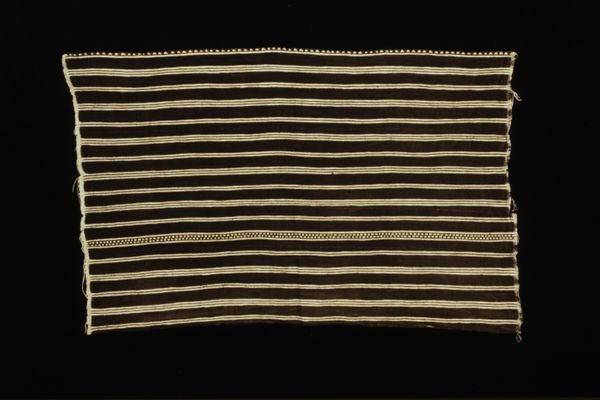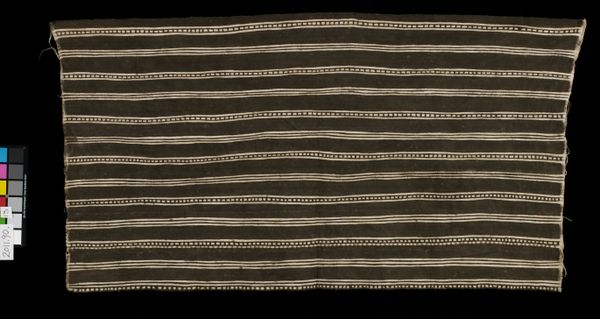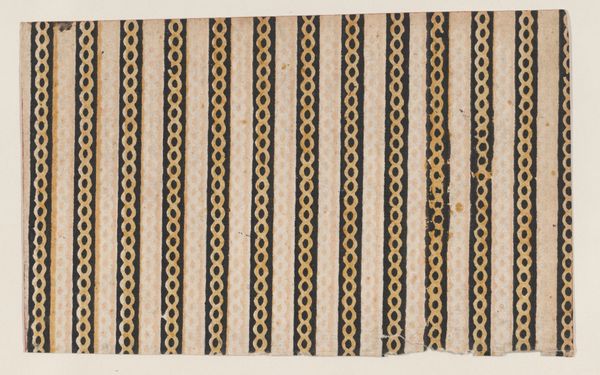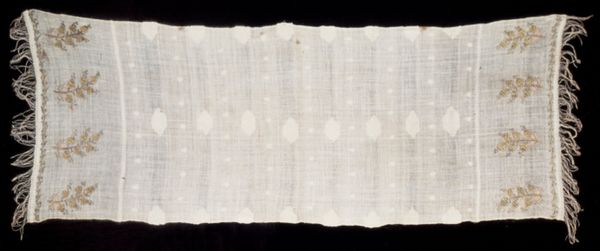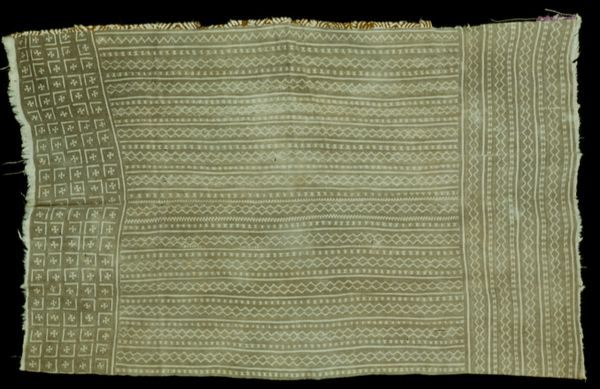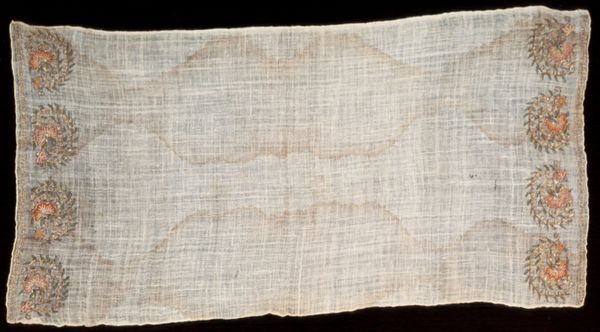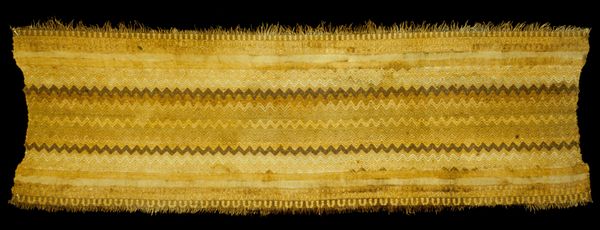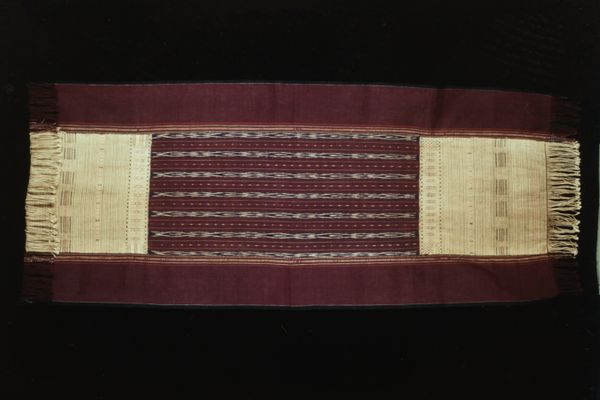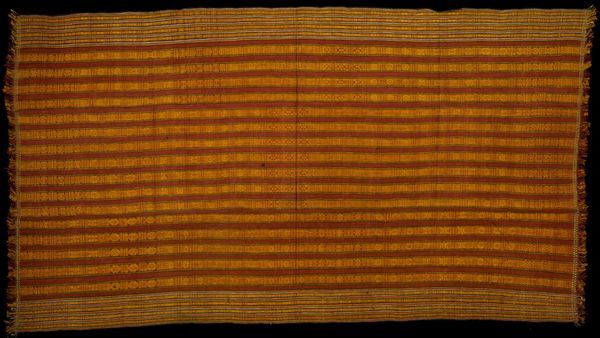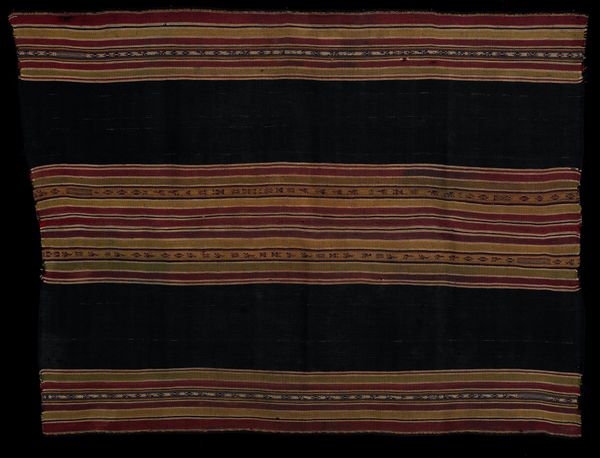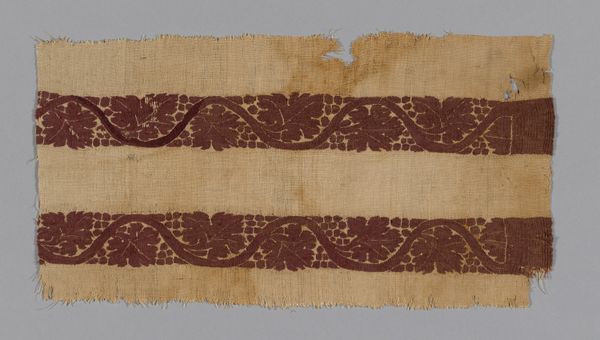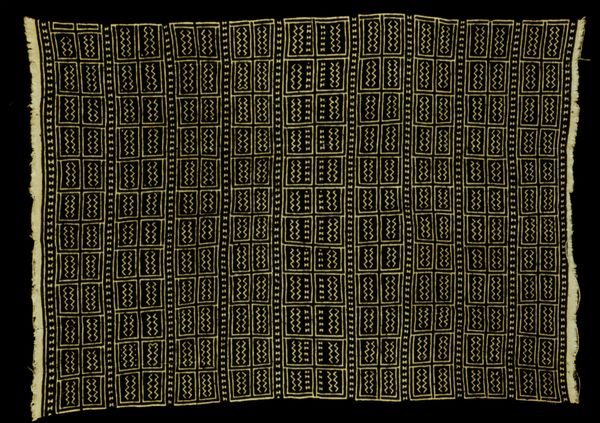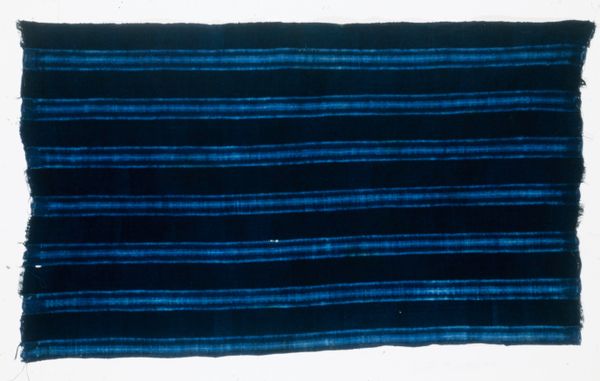
fibre-art, textile, cotton
#
african-art
#
fibre-art
#
textile
#
geometric pattern
#
geometric
#
abstraction
#
cotton
Dimensions: 38 x 57 1/4 in. (96.5 x 145.4 cm) (irregular)
Copyright: Public Domain
Curator: Welcome to the Minneapolis Institute of Art. We’re standing before a striking example of mud cloth, dating back to the 20th century. These textiles are often imbued with symbolic meanings, representing narratives of identity and resistance. Editor: You know, just looking at it, the first thing that strikes me is how deceptively simple it is. Just these horizontal lines, broken by little dots. But the variations! It feels… almost musical. Like a visual rhythm. Curator: Exactly. Each of the symbols woven into these textiles serves as a potent cultural marker, a way to transmit ancestral wisdom and communal identity across generations. These cloths functioned beyond mere adornment, acting as powerful statements of personal and collective history. Editor: I can see that. I mean, the repetition creates this really strong sense of… persistence. It feels solid and earthy, in a way. Like something rooted deeply in tradition, even though it uses abstraction. Does that make sense? Curator: Absolutely. In this particular example, created in what's known today as Mali, West Africa, the cotton textile speaks volumes about local ecology and cosmology through the organic mud-dyeing process, linking the piece intrinsically with the land from which it originates. We can think of this piece as a testament to both human innovation and cultural resilience. Editor: Resilience… I love that. It's almost as if each stitch is a tiny act of defiance, telling a story the dominant culture might not want told. And even beyond its powerful context, its raw materiality is striking. I imagine feeling connected to history just by touching it. Curator: Mud cloth reminds us how textiles serve not only as artistic endeavors, but also sites of resistance, memory, and cultural assertion in various African contexts. Editor: It gives you chills when you think about all the layers of meaning baked right into the earth used to create it! Now when I look at it I think that this mud cloth really sings with stories, passed from hand to hand, land to land, it makes you want to be a part of that singing, doesn't it? Curator: It certainly inspires deeper appreciation and recognition for its power in cultural transmission, for sure.
Comments
No comments
Be the first to comment and join the conversation on the ultimate creative platform.
